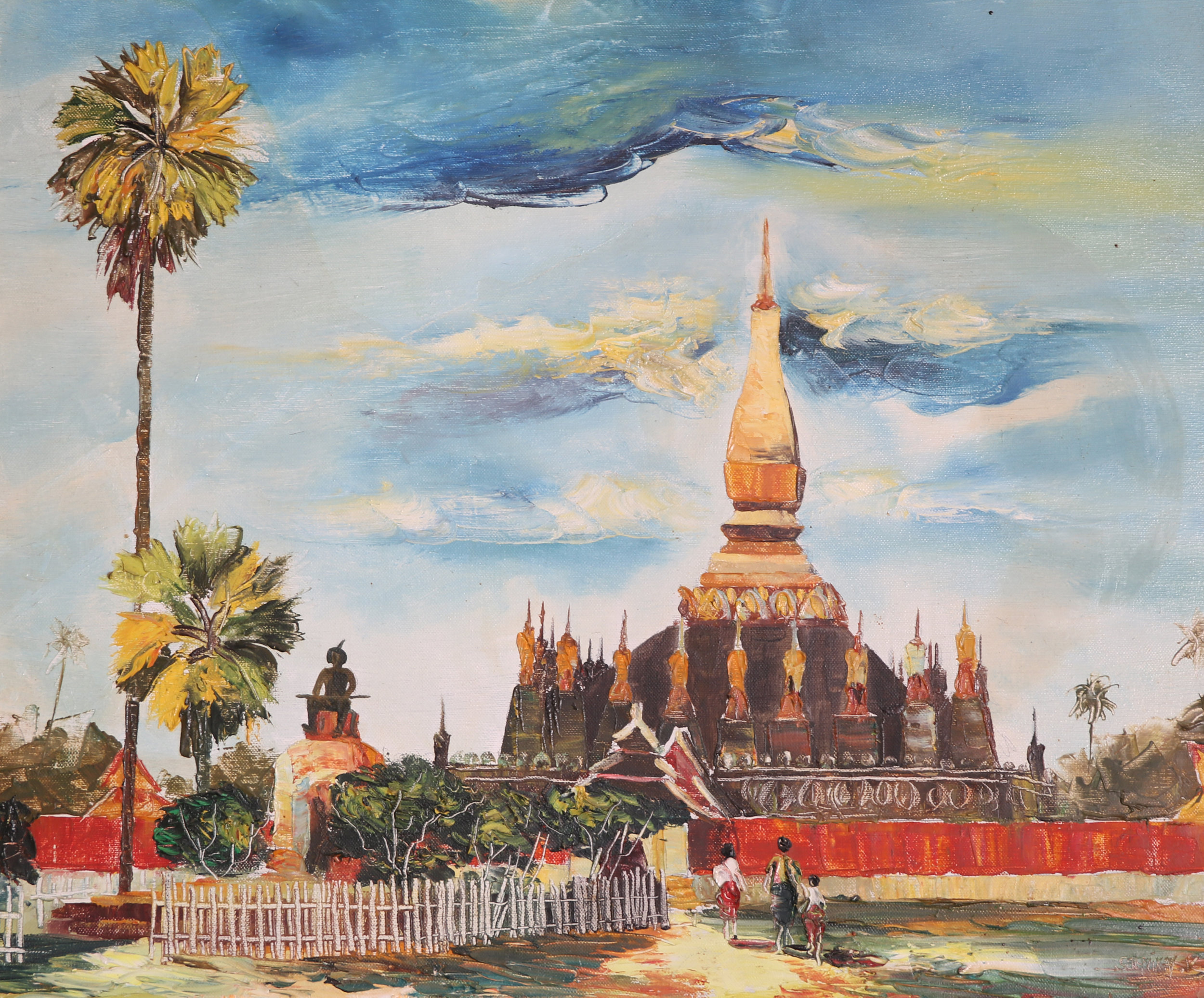The kingdom of lan xang
Modern Laos bases its history with the founding of the kingdom of Lan Xang in 1353. King La Ngum founded Lan Xang through conquest after exile from Xiang Dong Xiang Thong, the capital of the previous kingdom. The circumstances leading to the then prince and his father’s exile are unclear.
Ngum ended up in what is known now as modern Cambodia where he gained the trust of the Khmer King. Ngum returned to his home kingdom married to a Khmer princess — bringing with him an army. He conquered cities and villages on his way to Xian Dong Xian Thong where he claimed victory and declared himself king. Xian Dong Xian Thong was later renamed Luang Prabang in the early 1560s. Today, Luang Prabang is a modern Laos city.
Ngum’s queen is credited for introducing Theravada Buddhism to the kingdom. It's the most practiced branch of Buddhism, as well as the largest religion in modern Laos. Lan Xang Hom Khao, the capitol’s full name, means “the land of a million elephants and the white parasol,” with the elephants symbolizing military strength (as well as actual elephants of war) and the white parasol symbolizing royalty.
The kingdom went through many changes in the next few centuries. Southeast Asia was in constant warfare, and Lan Xang territories shrank as neighboring kingdoms invaded. One of the Lao Kings established a new capital and named it Vientiane, which is also the present capital of Laos.
The kingdom’s decline, according to Martin Stuart-Fox, came from a few factors — there was no clear rule as to which son of the king would ascend the throne, and a few kings' reigns were cut short, thereby never establishing continuous and peaceful transition of power.
It wasn’t until 1637 when King Surinyavongsa ascended that the kingdom entered a time of peace and prosperity that lasted 57 years. During this period, in the 1640s, the first recorded Europeans visited Vientiane. The first, Gerritt Van Wuysthoff, an employee of the Dutch East India Company, stayed for two months. The second, Father Giovanni-Maria Leria, an Italian Jesuit missionary, stayed for five years.
After Van Huysthoff and Leria, Laos wouldn't have another European visitor for another 50 years.
Surinyavongsa died of old age sometime between 1694 and 1695. He left the kingdom without a clear successor because he had his son executed for adultery. With the kingdom once again in disarray, the Vietnamese and Siamese intervened and divided the kingdom in to three parts. This outcome was a severe blow to Lao dominance. By the mid-18th century, all three kingdoms came under Siamese rule.
These Kingdoms were unlike the European monarchies. Instead of absolute control over an empire, the southeast Asian governance followed a tributary framework. Each kingdom was autonomous, but they had to respond when Siam called for aid, pay taxes and pay respects.
By the end of the 19th century, Siamese control over Lan Xang gave way to French colonialism.

![(By Chaoborus (Own work) [CC BY-SA 3.0 (http://creativecommons.org/licenses/by-sa/3.0)], via Wikimedia Commons)](https://images.squarespace-cdn.com/content/v1/58f46ad917bffc955a950af2/1493878780901-V5F6599MREZ9NUD5Z97Q/Fa_Ngum_Monument)